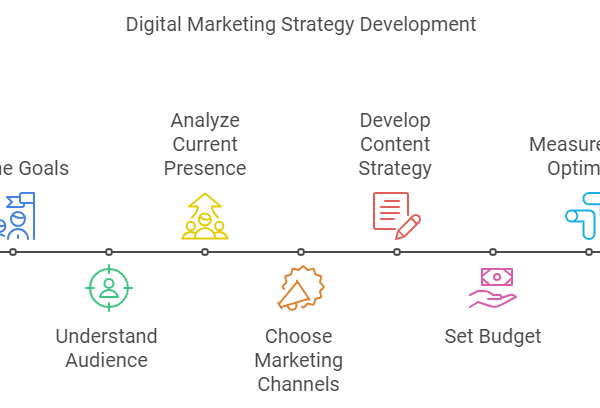
Setting up Jenkins for Continuous Integration with Cucumber
In the fast-paced world of software testing , ensuring that your code is reliable and bug-free is paramount. Continuous Integration (CI) is a practice that helps developers achieve this by automating the process of integrating code changes into a shared repository. Jenkins is a popular CI tool that can be used in conjunction with Cucumber, a Behavior-Driven Development (BDD) framework, to streamline the testing process. In this article, we will guide you through the process of setting up Jenkins for continuous integration with cucumber software testing , helping you deliver high-quality software with confidence.
Table of Contents
| Sr# | Headings |
| 1 | Introduction |
| 2 | What is Continuous Integration (CI)? |
| 3 | Why use Jenkins for CI? |
| 4 | Setting up Jenkins for CI with Cucumber |
| 5 | Installing Jenkins |
| 6 | Configuring Jenkins |
| 7 | Integrating Jenkins with Cucumber |
| 8 | Creating a Jenkins job for Cucumber tests |
| 9 | Running Cucumber tests in Jenkins |
| 10 | Viewing test reports in Jenkins |
| 11 | Best practices for using Jenkins with Cucumber |
| 12 | Conclusion |
| 13 | FAQs |
Introduction
Continuous Integration (CI) is a software development practice where members of a team integrate their work frequently, usually multiple times a day. Each integration is verified by an automated build (including test) to detect integration errors as quickly as possible. Jenkins is a widely used CI tool that helps automate the building, testing, and deployment of code changes.
What is Continuous Integration (CI)?
Continuous Integration (CI) is the practice of frequently integrating code changes into a shared repository. Each integration is verified by an automated build and test process to detect and fix errors early in the development cycle. This practice helps teams deliver high-quality software more efficiently and with fewer bugs.
Why use Jenkins for CI?
Jenkins is an open-source automation server that is easy to install and configure. It provides hundreds of plugins to support building, deploying, and automating any project. Jenkins helps automate the entire software development process, from code integration to testing and deployment, making it an ideal choice for CI.
Setting up Jenkins for CI with cucumber framework in selenium
Installing Jenkins
To install Jenkins, you can download the Jenkins WAR file from the official Jenkins website and run it using the Java command. Alternatively, you can use a package manager like apt (for Ubuntu) or brew (for macOS) to install Jenkins.
Configuring Jenkins
Once Jenkins is installed, you can access the Jenkins web interface from your browser and configure it to meet your requirements. You can configure Jenkins to connect to your version control system (e.g., Git) and set up build triggers to automatically start a build when new code is pushed to the repository.
Integrating Jenkins with Cucumber
To integrate Jenkins with Cucumber, you’ll need to install the cucumber behaviour driven development plugin for Jenkins. This plugin allows Jenkins to understand Cucumber test reports and display them in a readable format. You can install the Cucumber plugin from the Jenkins plugin manager.
Creating a Jenkins job for Cucumber tests
After installing the bdd framework Cucumber plugin, you can create a new Jenkins job for running Cucumber tests. In the Jenkins web interface, navigate to the “New Item” page, enter a name for your job, select the “Freestyle project” option, and configure the job to run your Cucumber tests.
Running Cucumber tests in Jenkins
Once you have configured your Jenkins job, you can run your software testing cucumber tests by triggering a build manually or automatically using build triggers. Jenkins will execute your Cucumber tests and display the results in the Jenkins web interface.
Viewing test reports in Jenkins
Jenkins provides a user-friendly interface for viewing cucumber framework test reports. You can see the status of each test (passed, failed, or skipped) and view detailed logs for each test. This helps you quickly identify and fix any issues in your Cucumber tests.
Best practices for using Jenkins with Cucumber
- Use the Jenkins Pipeline feature to define your build process as code. This makes your build process more maintainable and easier to understand.
- Use the Jenkins Job DSL plugin to define your Jenkins jobs as code. This allows you to version control your Jenkins job configurations and easily reproduce them in different environments.
- Use Jenkins’ built-in support for Docker to run your Cucumber tests in a clean, isolated environment. This helps ensure that your tests are consistent and reliable.
Conclusion
Setting up Jenkins for continuous integration with cucumber software can help you streamline your testing process and deliver high-quality software more efficiently. By automating the building, testing, and deployment of your code changes, you can catch bugs early in the development cycle and deliver reliable software with confidence.
FAQs
Q: How does Jenkins help with Continuous Integration?
- A: Jenkins automates the building, testing, and deployment of code changes, making it easier for teams to integrate their work frequently and detect errors early in the development cycle.
Q: What is Cucumber?
- A: bdd cucumber framework that allows developers and testers to write executable specifications for software behavior in plain text. It helps teams collaborate more effectively and ensures that software meets the desired behavior.
Q: How do I install the Cucumber plugin for Jenkins?
- A: You can install the BDD framework in selenium plugin for Jenkins from the Jenkins plugin manager. Simply search for “Cucumber” in the available plugins and install it.
Q: Can I use Jenkins to run Cucumber tests written in different programming languages?
- A: Yes, Jenkins supports running cucumber software testing tests written in different programming languages, as long as you have the necessary plugins and dependencies installed.
Q: What are some best practices for using Jenkins with cucumber framework testing ?
- A: Some best practices include using the Jenkins Pipeline feature to define your build process as code, using the Jenkins Job DSL plugin to version control your Jenkins job configurations, and running your Cucumber tests in a clean, isolated environment using Docker.











